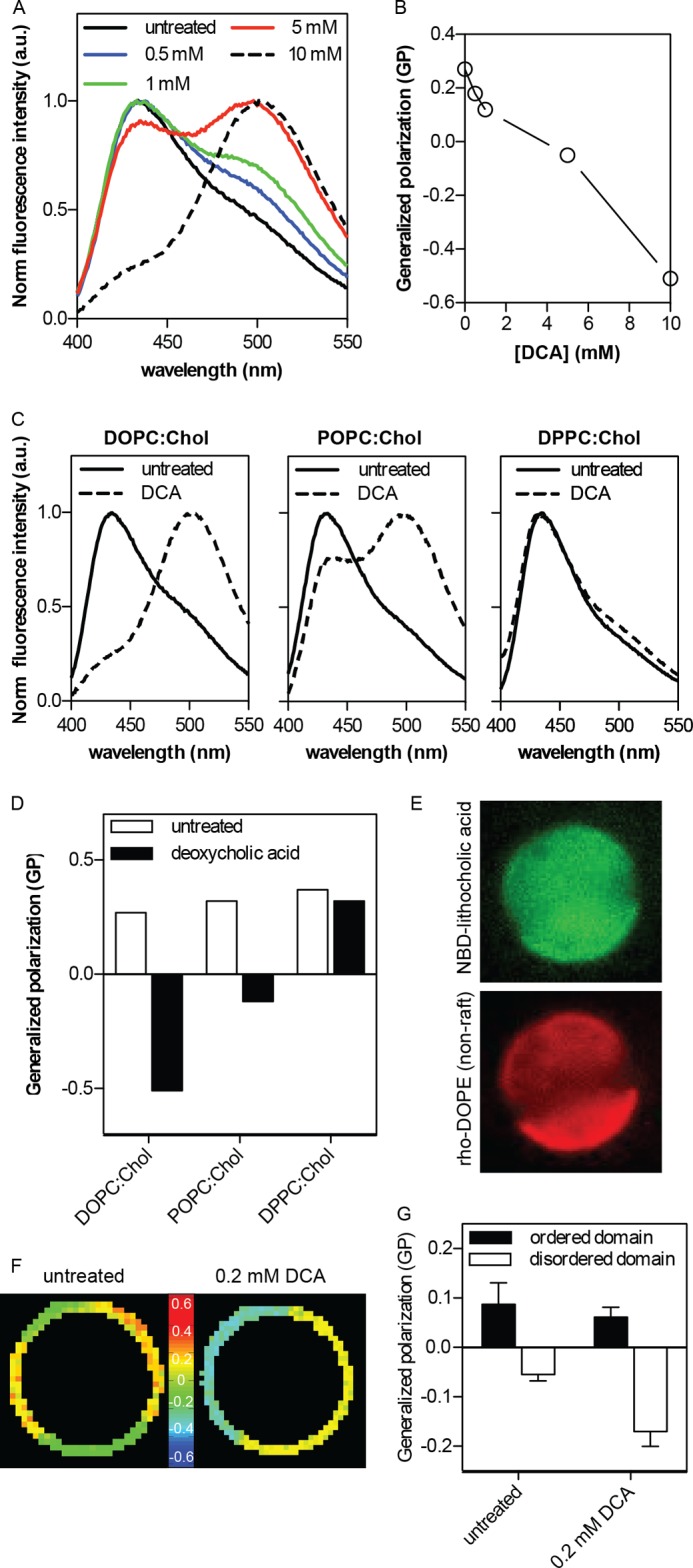FIGURE 4.

Stabilization of domain separation by bile acid-induced disordering of the nonraft phase. A, DCA induces a progressive, concentration-dependent decrease in membrane order of DOPC:cholesterol (Chol) (1:1) synthetic liposomes, as evidenced by the red shift of normalized fluorescence emission of the order-sensitive fluorophore C-Laurdan. Higher DCA concentrations are possible without complete membrane dissolution in this context because of high lipid concentration (∼1 mm) relative to GPMV suspensions. B, generalized polarization (GP) of C-Laurdan calculated from the data in A shows the quantitative trend of membrane disordering. C and D, disordering effect of DCA is much more pronounced in liquid-disordered phase membranes (DOPC:Chol, 1:1) than liquid-ordered phase (DPPC:Chol, 1:1), with an intermediate effect on an intermediate order membrane (POPC:Chol, 1:1); a.u., arbitrary units. E, a fluorescent analog of bile acid (NBD-lithocholic acid) preferentially binds to the disordered (nonraft) domain in phase separated GPMVs, evidenced by co-partitioning between the nonraft marker rhodamine-DOPE and the bile acid derivative. F and G, treatment of isolated GPMVs with 0.2 mm DCA leads to further disordering of the disordered domains, without a notable effect on raft phase order (mean ± S.D. (error bars) of 5–9 vesicles/condition). The greater difference between the coexisting domains (ΔGP = 0.23 ± 0.02 in DCA-treated compared with 0.14 ± 0.04 in untreated) is likely responsible to the DCA-enhanced stability of phase separation.
